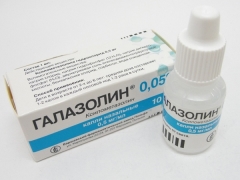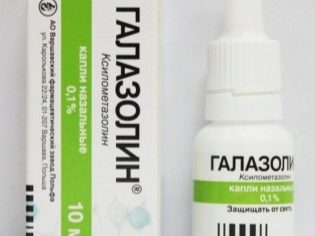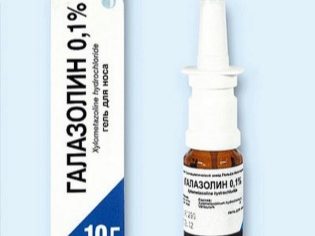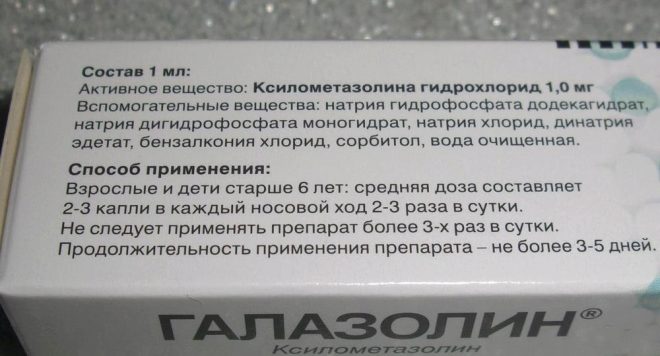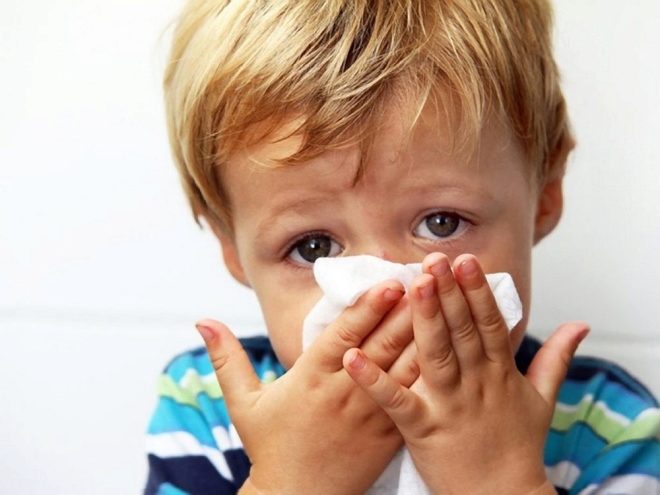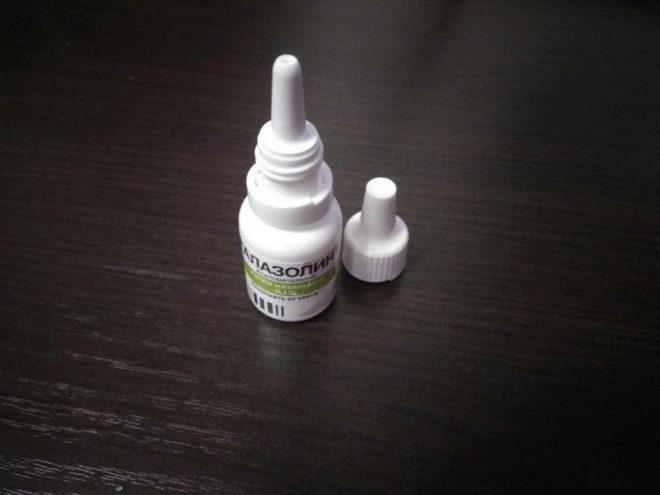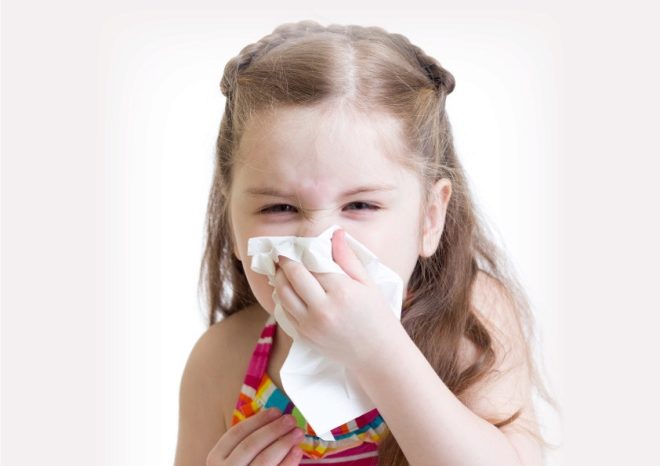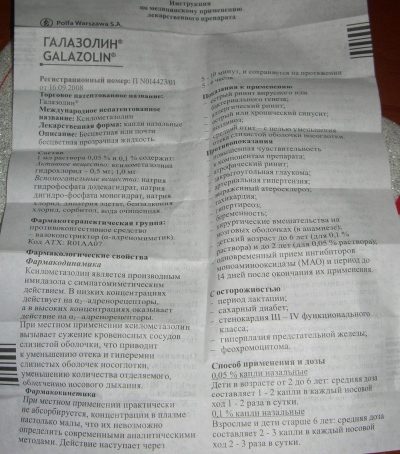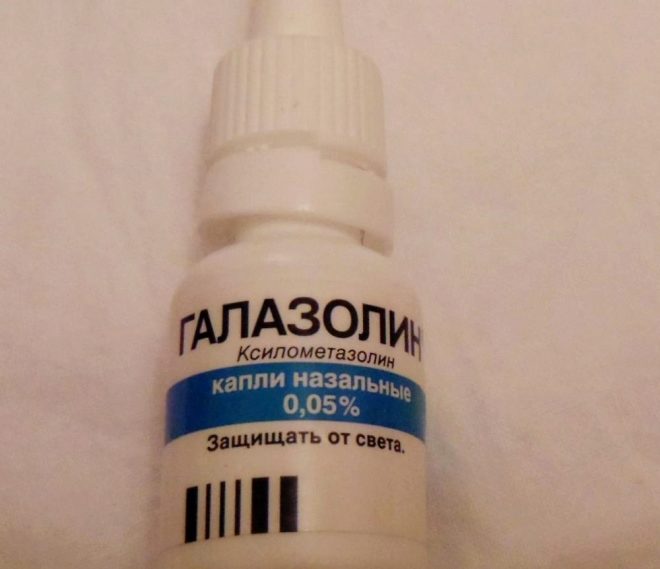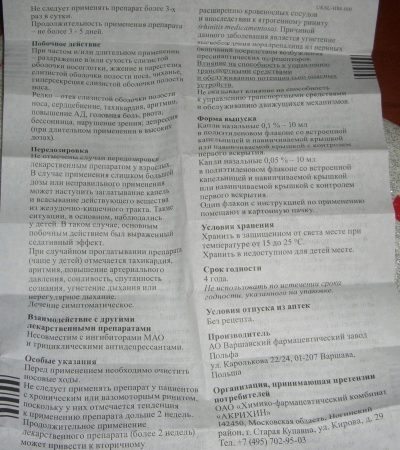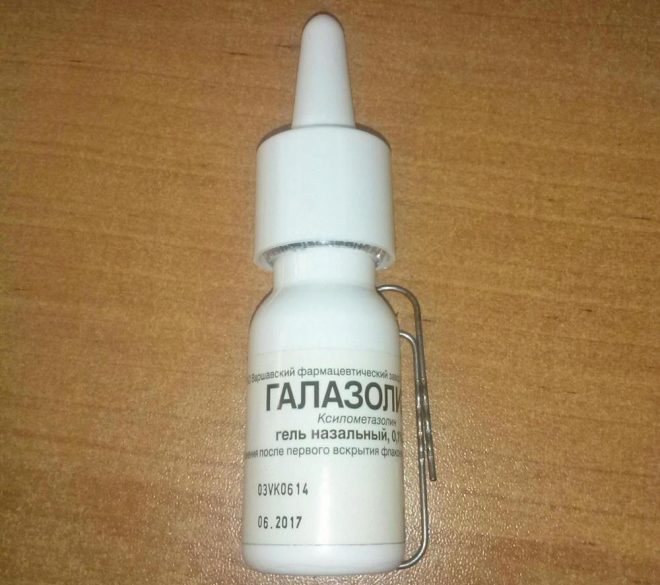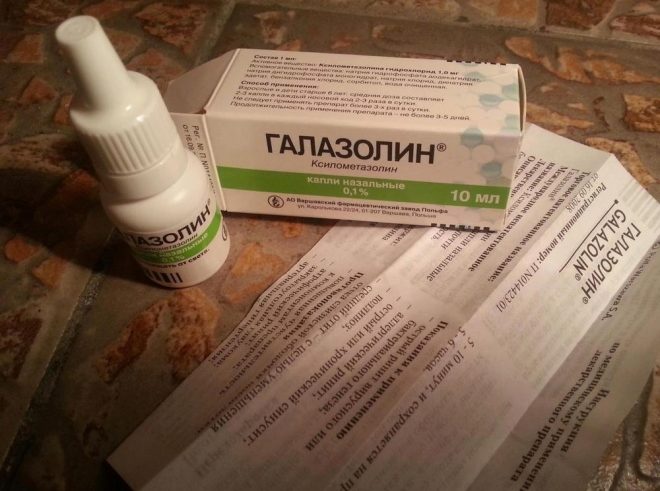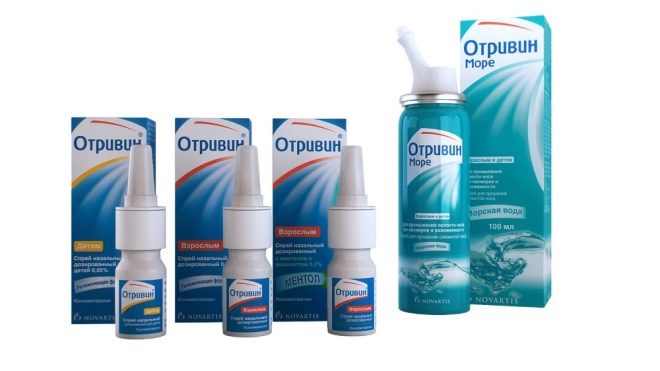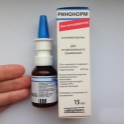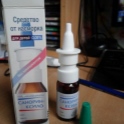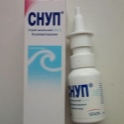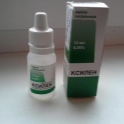Galazolin for children
The most popular group of drugs to combat the common cold is vasoconstrictor drugs. One of the representatives of this group is Galazolin. Is this medicine permitted in childhood, in which cases it is prescribed to children and how can it be dangerous for the child's body?
Release form
Galazolin is produced in these two types:
- Nasal drops. It is packaged in bottles of 10 ml clear liquid without any color. Each bottle is equipped with a dropper and closed with a screw cap.
- Nasal gel. It is an almost colorless viscous liquid, which is often transparent, but can also be slightly opalescent. One bottle of this gel contains 10 grams of medication. Packaging is equipped with a special dispenser.
Both forms of the drug are available in two dosages - 0.1% and 0.05%.
Composition
The main component of any form of galazolin is represented by xylometazoline. In the medicine with a concentration of 0.05%, it is represented by the amount of 0.5 mg per 1 gram of gel / 1 ml of drops. In a preparation with a concentration of 0.1%, the amount of xylometazoline in both 1 ml of drops and 1 g of gel is 1 mg.
Most of the excipients in the drops and the gel are the same - these are purified water, hydrogen dodecahydrate hydrogen phosphate, Na dihydrogen phosphate, sodium monohydrate, Na chloride, and benzalkonium chloride (50% solution), as well as sorbitol and edetate disodium. In addition to them, gietellosis is still present in the nasal gel.
Operating principle
Xylometazoline in the composition of the gel or drops Galazolin is able to narrow the vessels in the nasal mucosa. This effect is due to the effect of the drug on alpha-adrenergic receptors.
After topical treatment with Galazolin:
- Puffiness of the nasopharyngeal mucosa is eliminated;
- Redness of the mucous membrane decreases;
- Nasal breathing is relieved;
- Reduces the amount of discharge from the nose.
The therapeutic effect of the drug begins to manifest itself only about five minutes after the administration of the medicine to the nose. The effect of the use of drops persists up to 6 hours, and after gel treatment it lasts up to 10 hours.
Indications
Application Galazolin claimed:
- With acute rhinitis caused by viruses;
- With acute rhinitis of bacterial genesis;
- With pollinosis;
- With otitis media;
- With acute sinusitis;
- With allergic rhinitis;
- With exacerbation of chronic sinusitis.
Age restrictions
The use of any form of Galazolin is contraindicated in children up to 2 years. Babies who are 2 years old are given nasal drops with a xylometazoline concentration of 0.05%. From the age of 3, a 0.05% nasal gel can also be applied. A higher concentration of the active compound (0.1%) is contraindicated for up to 6 years. In this case, children older than six years prescribed the drug in drops, and 0.1% gel is allowed only from 12 years of age.
Contraindications
Galazolin not appointed:
- If the child is sensitive to any component of the medication;
- With the atrophic form of rhinitis;
- With tachycardia;
- With glaucoma (angle-closure);
- With increased blood pressure;
- When performed in the past surgery on the meninges.
Nose drops are also contraindicated in hyperthyroidism, and the gel with this diagnosis is used with caution. In addition, the increased attention of the doctor requires the appointment of Galazolin in diabetes or pheochromocytoma.
Side effects
After using Galazolin, a local reaction is possible, which often occurs with excessively long treatment or too frequent administration of the drug in the nose. In such situations, the mucous membrane strongly dries out, the patient complains of discomfort and burning. In addition, nasal discharge may increase, and in some children, nasopharyngeal edema is possible.
In rare cases, treatment with gel or drops leads to systemic adverse reactions such as tachycardia, increased blood pressure, nausea, drowsiness, arrhythmias, insomnia, visual impairment, and other symptoms. In addition, prolonged use of the drug often causes medical rhinitis or depression.
Instructions for use and dosage
- Before you drip Galazolin in the nose or enter the gel, you need to clean the nasal passages.
- Use drops Galazolin allowed no more than 3 times a day. Children under 6 years of age can take medicine either once a day or twice a day. At the age of 6 years old, the medicine is instilled 2 or 3 times a day.
- A single dosage of drops is 1 or 2 drops of 0.05% medication for a child 2-6 years old and 2 or 3 drops of a 0.1% solution for a child over 6 years old.
- The gel is injected into the nose of a small patient with an interval of 8 to 10 hours. At the age of 3-12 years, one administration is prescribed to each nasal course of the drug with a concentration of 0.05% xylometazoline, in which 50 μg of the active compound is ingested. Teenagers over 12 years old are given 0.1% gel, that is, 100 µg of the active ingredient in each nostril.
- Before inserting the gel into the nose, remove the cap from the bottle and repeatedly press the dispenser until the gel appears.
- The duration of treatment with Galazolin is usually 3-5 days. The maximum allowable period of use of the drug - 2 weeks.
Overdose
If you drip more Galazolin into your child than the doctor prescribes, an excess of the drug can get into the stomach and be absorbed, which will lead to a pronounced sedative effect (the child becomes drowsy, he has a confused consciousness and breathing may be disturbed). In addition, such an overdose provokes tachycardia, increased blood pressure and heart rhythm disturbances. If these symptoms occur, you should immediately show the small patient to the doctor.
Interaction with other drugs
Galazolin should not be used with drugs that are MAO inhibitors. If the patient received such medications, at least 2 weeks should pass between their intake and treatment with Galazolin. Also, the drug is incompatible with tricyclic antidepressants. If other sympathomimetics are prescribed at the same time, their therapeutic effect will increase, which is important to consider when determining the dosage.
Terms of sale
Both gel and drops Galazolin belong to drugs that are sold without a prescription. For this reason, they can be freely purchased at most pharmacies. The average price of a bottle with 0.05% drops is 35 rubles, and for a package of 0.05% gel you need to pay about 100-120 rubles.
Storage features
It is necessary to keep Galazolin at home in a place hidden from direct sunlight where children will not have access. When storing medications, the air temperature should not be above +25 degrees. The shelf life of nasal drops is 4 years, and the sealed gel packaging is 3 years. After opening the bottle, the gel can be stored for no longer than 12 weeks.
Reviews
On the use of Galazolin in children there are many good reviews. The drug is praised for its quick action, lack of smell and taste, pronounced vasoconstrictor effect and low cost. Among the minuses of the drug most often mentioned addiction, which is why after a few days of treatment, a drop or gel does not help. In addition, many mothers say that the drug is very dry mucous membrane.
Analogs
If you need to replace Galazolin, you can treat a runny nose, otitis or sinusitis in a child with another drug with the same active ingredient.
The doctor may prescribe one of these drugs:
- Otrivin;
- For carrying;
- Xylen;
- Rinonorm;
- Renomaris;
- Renorus;
- Xymelin;
- Snoop;
- Suprima-NOZ;
- Dr. Theiss Rinotaiss;
- Farmazolin;
- Evkazolin Aqua;
- Sanorin-Xylo;
- Tizin Xylo;
- Rhinostop.
Most of these drugs are presented in drops in the nose, but many are also produced in the form of a metered spray. At a dosage of 0.05%, they are administered from the age of two, and a solution with a concentration of 0.1% is used in children over 6 years of age. Spray is also often recommended from the age of six. Only Otrivin drops of 0.05%, according to the annotation for such a drug, can be given to a one-year-old baby and older.
You can learn more about vasoconstrictor drops and their proper use from the pre-release of Dr. Komarovsky in the video below.
